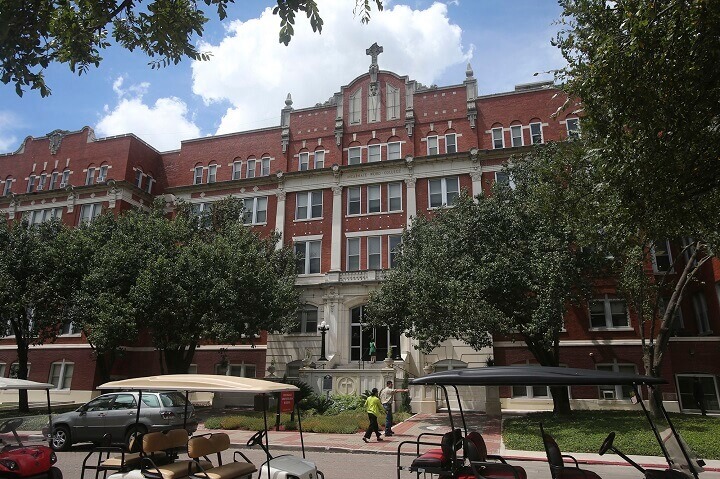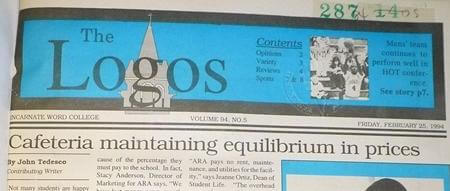
The latest issue of the Incarnate Word Logos, the student newspaper of the university in San Antonio where I studied journalism, published an article in May about the school cafeteria, and how some students are unhappy with their meal plans.
The article stirred up ancient memories. My very first news story was published in the Logos in 1994, and it was about high cafeteria prices.
The topic might sound trivial. But it certainly mattered to the 3,000 students who attended Incarnate Word. And what I learned about the high cafeteria prices at Incarnate Word got me hooked on journalism.
New to journalism
At the time, I was a sophomore majoring in English and really had no clue what I wanted to do in life. Then my friend Gabby, who was in my “Intro to Mass Communications” class taught by Valerie Greenberg, asked if I wanted to write for the student newspaper. I shrugged. Sure. I had never even considered journalism before. But it sounded kinda interesting.
The Logos was a small paper published every few weeks. Its office was the size of a dorm room. It was cluttered with paper and filing cabinets, old wooden chairs, and heavy metal desks with tiny Macs. Alex Garcia, the Logos editor, was in dire need of student journalists and took me under his desperate wing.
Related: Top five books every journalism student should own
I can’t remember who came up with the story idea to write about Incarnate Word’s cafeteria prices. “I think somebody on the staff — and I can’t remember who it was — went to summer school on another campus,” said Alex, who kept in touch with me over the years. The price of food at that school was way cheaper, Alex said. Somehow we came up with the idea to compare Incarnate Word’s cafeteria prices to other schools.
Students make a discovery
Gabby and Alex had cars. Over the next few days in our spare time we drove around San Antonio to other college campuses — St. Mary’s University, Trinity University, Our Lady of the Lake University.
I distinctly remember walking into Trinity University’s cafeteria and being awestruck at its decadent size. While Incarnate Word offered the basics like hamburgers and pizza, Trinity had Asian food, healthy food — all kinds of food. And the offerings were cheaper! I couldn’t believe it.
We visited other campuses and found the same thing. They had more offerings than Incarnate Word and better prices. And it turned out the same company ran all the cafeterias: ARAMark, a corporation that sold food at the Alamodome during Spurs games.

I felt an overwhelming need to shout our discovery from Incarnate Word’s administration building. The front page of the student newspaper offered me a way to do that.
My story was published on Feb. 24, 1994. The headline and my writing sucked. But it was the top story on the front page and I was instantly hooked on journalism. I thought it was so cool to dig up information other people didn’t want me to know, and to share it with the world.
That’s what journalism is all about.



